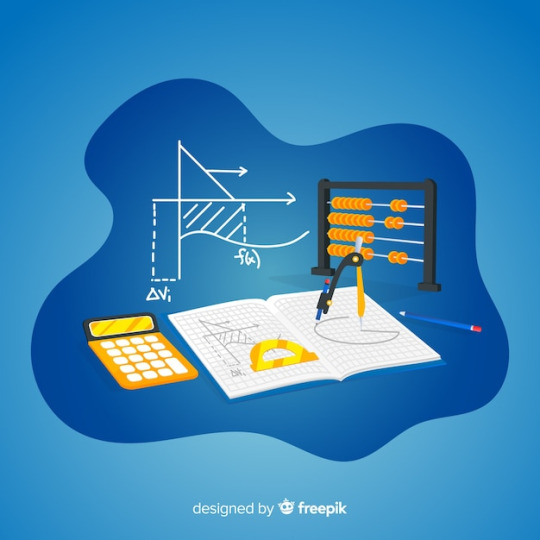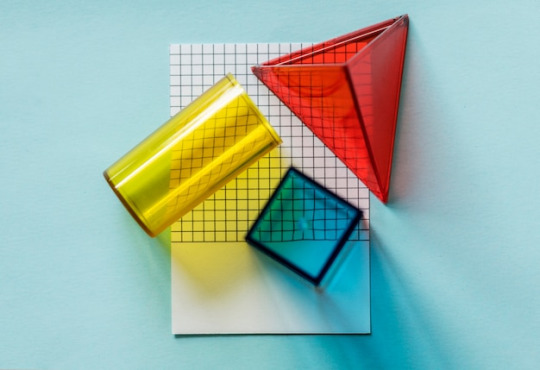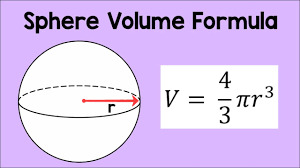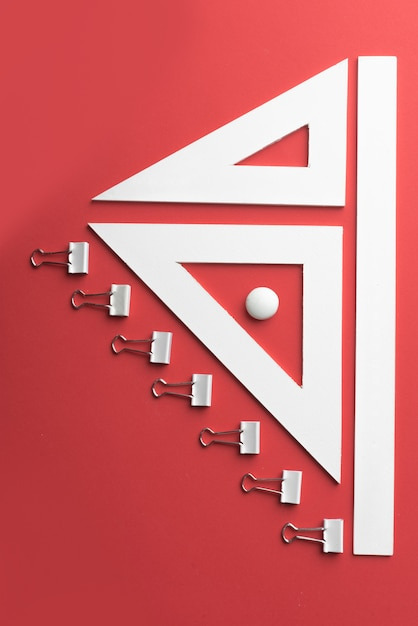Text
Plotting points on cartesian plane = plotting high score in class 10. How?
Cartesian Plane
QuadrantsAbscissa
Ordinate

Heard about these terms? Sounds quite fancy, right? What if these terms can increase the chances of you getting a better score in class 10 Maths? Confident about this little chapter? Take a test on SeekoG about coordinate geometry in class 9 to know how much you know.
Why take a test in class 9?
Because strong basics lead to better scores. Take a test so you don’t miss out on anything!
Being a small chapter, coordinate geometry does not usually get the required attention from the students. But this small chapter consists of concepts that can get confusing at times. These huge confusions could be solved by simple basics of the chapter. So, what could be the most basic question about the chapter?
How does coordinate geometry work?
What kind of questions will be there that you need to solve?
All right, the term Cartesian Plane is the base of coordinate geometry. How? As the name suggests, it is a plane on which the x and y axis exists and divides the plane into four equal quadrants as you can see in the image below.
Each point on the cartesian plane has a value that could be found by observation. But if you’re told that you need to find out the distance between two points, what would you do? No need to be extremely worried about this. There are methods to find it. By the way, did you know that there is a different formula if one of the two points that are given is the origin/ (0,0)?
Now exactly here when you think that chapter ends, you might go wrong. The tricky part comes here when we talk about one of the methods of finding the distance between two points through Pythagoras’ theorem. Obviously, there are many other concepts that still might be pending so keep preparing.
Wait! Wasn’t Pythagoras’ theorem in the chapters on Triangles? Well, surely it is there as well. If you also remember this concept of Triangles, try taking a test on the SeekoG app and you will be one step closer to success.
Want a study plan for Triangles? Click here
0 notes
Text
Best Planning for CBSE 10th Board
Its Time. Strap your boots and pull up your socks, it's Time.
As the academic year begins, you will need to start early and well, finish early for your class 10 Boards. Class 10 is going to be thrilling as Schools will have a number of programs and function all around the year, but you shouldn’t get distracted because all the thrill is going to show on your final exam showdown. But wait, there's a plan that can help you finish your studies faster, score more & make the full of all the sports & programs at school. Check SeekoG.

Would you like a plan where you could make time for your best scores as well as your best school year?
Follow these tips!
Find the topics that you have understood well and the topics/chapter with SeekoG Academic Diagnostic test & Gap Analysis Report, then prepare a timetable to follow.Note down the concepts for which you score below 80 in the Gap Analysis Report, and seek your teacher's explanation to understand the concept/ chapter clearly. You can also book a 1:1 tuition with
SeekoG tutors.Spend more time in your study plan to master difficult concepts and less time on ones you find simpler. Simultaneously, Check out
SeekoG Blogs for study plan in class 10 Maths, Science, English & Social to make sure you are on track.
Bonus Tips:
Always Keep in mind, whatever you study, however minor the topic it is, you must revise it before you make your bed. And if you want to enhance your memory, use chunking, deep
processing, or first-letter techniques or SeekoG Mind Maps.
Make brief notes to support your main content. It will help you to stimulate your mind
and emphasis important information. It is also simpler to connect classroom learning
to textbook readings when your notes are organized in this way.
There it is, your class 10 study plan!
All you need to do is follow these steps consistently and watch your scores improve. Remember to pay attention to your CBSE boards or take your exams for granted. Because CBSE exams are important and crucial in your career, so reading and understanding is everything. You can practice by solving the previous year's sample papers and ensuring disciple. And if you want more questions to solve, Take a test on SeekoG. Register - Choose Class - Choose Subject & start your A+ journey. All the best & remember that your hard work and patience will not go in vain.
Read more Class 10 blogs
0 notes
Text
Is REAL NUMBERS the real way to higher numbers?
In this world of mathematics, real numbers hold a unique place. Your first chapter in class 10th, helps you create a basis for the preceding chapters. But, to learn this chapter, you must know about the class 9 Number system. You learn about the operation, properties, and application of real numbers. Real numbers are easy if you keep them real and easy. Do not make it complicated because it's more to come after the definition on the first page.
One of the fundamental aspects of real numbers is their properties, which are essential for performing various Mathematical operations.

In Class 9, students learn about the properties of addition, subtraction, multiplication, and division of real numbers. These properties, such as the commutative property, associative property, and distributive property, allow for efficient calculations and help establish the foundation for algebraic manipulations. Want to check how much you remember from your previous learning? Take SeekoG Test Now!
Class 9 mathematics introduced the classification of real numbers into rational and irrational. These can be expressed as fractions, terminating decimals, or recurring decimals. Irrational numbers, on the other hand, cannot be expressed as fractions and have non-recurring, non-terminating decimal representations. You have explored the properties and examples of both rational and irrational numbers. And gained a deeper understanding of their distinct characteristics.
In class 10 you will learn about Euclid's division lemma, which is used to find the HCF of two positive integers, and the fundamental theorem of arithmetic. Kudos! You have already studied recurring decimals and terminating in class 9. You will find the same concepts in Euclid’s division. If you are perfect, Euclid's will be easier for you but if not, practice more with SeekoG tests & questions on Real numbers in the SeekoG app.
This is the first chapter, therefore it is important to firm your base before starting with class 10 Math. The study of this in Class 9 mathematics lays the foundation for understanding and working with numerical values in a wide range of applications. By exploring real numbers' properties, classifications, and operations, you will develop critical thinking skills and enhance your mathematical abilities. The concepts learned in Class 9 provide a stepping stone for more advanced mathematical concepts in higher grades.
Want a quick study plan for class 10 Probability? Click!
0 notes
Text
Is learning only formulas of QUADRATIC EQUATIONS enough?
Remember solving the questions from polynomials? No? Here’s an example so that you can understand Quadratic equations.
2x2+3x+1

Still not sure about the concepts from polynomials? Take a test of polynomials in class 9 on the SeekoG app so that you can save time by understanding Quadratic equations better and faster.
Now that you are confident about polynomials, do you know that it is very much related to Quadratic equations? But how?
Here’s how – Try Equating a quadratic expression to a constant and this is how you get a quadratic equation. For example- the above-given expression has been converted to an equation.
2x2+3x+1= 0
Other than this do you know the points that are quite important in these equations?
Let’s take px2+qx+r=0 as an example.
Here are some key points that need to be remembered by all of you:
p and q are the coefficients of x
In a quadratic equation, the value of p should not be equal to 0.
The roots of a quadratic equation are the only value of x that could satisfy the equation.
Not many points to remember. This chapter is quite easy, right? Actually, this is just a small drop from the sea of quadratic equations. You now know about roots but what about the value of roots? How will you find it? Is there some specific formula for finding these?
Well, there is a formula to find the roots of the equation. But other than the method that involves a formula, there is another method as well. So, what are these methods? Now this should be answered by you. Take the test & use the methods you know to be ready for your class 10 Maths Quadratic Equations!
It's great to know about quadratic equations but won't it be excellent to know about the Cartesian plane? Click to read more.
0 notes
Text
Find the SURFACE AREA AND VOLUME of how much you studied.
It is very well known that this chapter on surface area and volume has a lot of formulas that you need to learn. But before that, it is required to understand what precisely these formulas are finding out.

As the name suggests, the formulas are all about finding the measurements. But have you measured the chances of you getting good marks in the chapters you find difficult in maths? Not yet? Don’t wait, check now!. Take a test on the SeekoG app to know how much you remember from class 9th so that your class 10 becomes easier to understand.
This chapter covers much surface area and volume of the syllabus like its name. But nothing to be worried about if you can have a quick revision of all the concepts like:
Surfaces
Especially the Surface Area of Cubes and Cuboids: This consists of calculating and adding the areas of all the faces.
Surface Area of Cylinders: Determining the areas of the two circular bases as well as the curved surface area.
Surface Area of Spheres: Calculating the surface area of spheres.
Similarly, there you will have to calculate volume as well:
Volumes
Cubes and Cuboids Volume: Multiplying the length, width, and height.
The volume of cylinders: Figuring out the product of the base area and the height.
The volume of spheres. This is accomplished by applying the formula (4/3)r3, where r is the radius of the sphere.

After this quick memory jog are you sure you are ready to understand all that your teacher will teach you in Class 10 Mathematics' Surface areas & Volumes? Why don't you make it 100% sure by perfecting your base in Class 9 Surface area & Volumes and make your class 10 Maths a Cakewalk? Take a test now, Get your Gap Analysis Report, fix all the gaps in the chapter & be ready to score 90+ in Class 10 Maths.
When your memory is ready with all the formulas conversion of units will become so easy that you would have never imagined. Confidence is all that is needed for this chapter and now that you are confident enough prove it to yourself!! Take a test on SeekoG and be proud of what you learned and definitely your memory.
Now you know about a sphere which is a 3D figure but what about the 2D version of it? Confident about Triangles? Here's what you need to know.
0 notes
Text
Find the PROBABILITY of getting 90% in class 10
Sometimes, you must think about the probability of you getting a high score in your exams in the Maths chapters. But did you know that there is a way of calculating these chances through Maths?

Well, obviously, Maths is not about astrology, and this totally depends on your capability but through probability, you can get a fair idea about the chances. Before getting into Probability, do you know that you can get a probability of you getting good scores in Statistics without applying any concepts of probability? But how? By taking a test on the SeekoG app as it will tell you everything, you’re good at and even about the knowledge of concepts that you might be lacking.
Well, SeekoG helps you in examining but obviously cannot solve the probability questions for you. So, to work on this, this chapter has quite a few concepts which are easy to understand, and this is the reason that makes this chapter one of the easiest. It is the branch of mathematics that measures the uncertainty of the occurrence of an event using numbers This is a chapter that consists of its own terminology like outcomes, events, experiments, sample space, and events, etc. It is important to know the definitions of these terms.
An Event: Calculating the probability of an event, which is a number between 0 and 1 that represents the likelihood of the event occurring. It is typically denoted by P(E), where E is the event.
Sample space and events: the set of all possible outcomes of an experiment, and events, which are subsets of the sample space.

There are several Types of Probability: Some of the types that you should explore are classical (based on equally likely outcomes), empirical (based on observed data), and subjective probability (based on personal judgment).
Practicing all these types of questions is the only way to not reduce the chances of you getting a good score on the exam. To be sure of this chapter that won’t have even a single bit of doubt, take a test on the chapter on Probability so that there will be no requirement for you to come back more than once or twice.
Want more practice on other chapters of Maths? Check SeekoG
0 notes
Text
Alert! Try out the TRIANGLES if the basics are base.
Did you know that there are six types of triangles? Three are based on sides and the other three are based on angles. Can you name all the six triangles?

Are you trying to recall them? Take test now & get your Gap Analysis report to see how much of your class 9 triangles you know & remember properly!
What is the point of taking a test in class 9, when you are already in class?
The point is, the confirmation that your triangles basics are strong enough to boost your Maths score in class 10.
Talking of the basics, despite the existence of 6 types of triangles, many polygons are similar to each other but can you tell if two given triangles are identical or not?
This is probably the easiest part among all the concepts of triangles. Taking a common example of us having similar features as our family. Similarly, a triangle can be similar to another triangle based on a few feature criteria such as:
Angle- Angle (AA) criterion
Angle- Angle- Angle (AAA) criterion
Side- Side-Side (SSS) criterion
Side-Angle-Side (SAS) criterion
Do you know these? That’s great. You know what can make you better at it? A test. A SeekoG academic diagnostic test on this chapter in class 9th will exactly tell you how good you are in each concept.
Another triangle concept that can confuse you with the similarity concept is the concept of proportionality. This concept is based on a theorem. Take notes here people!!
“If a line is drawn parallel to one side of a triangle intersecting the other two sides in distinct points, then the other two sides of triangles are divided in the same ratio.”
Will it be better if an example would have been provided? Definitely!!

It gets better when practical or visual representations are included in resources, right? But do you need a visual representation when we talk about Pythagoras’ theorem? Probably not if you took the Trigonometry chapter’s test in the SeekoG app.
You must be thinking that suddenly why exactly is this topic of Pythagoras’ theorem popped out of nowhere? Here’s a secret this chapter consists of an interesting part that proves Pythagoras’ theorem. Can you remember what the Pythagoras’ theorem says? Hint: It is about one of the types of Triangles. Hopefully, Triangles will be a lot easier now. Still, keep learning because it will be marked along with the knowledge that you’ll be earning.
Want to check why you should not neglect the chapter on Probability? Click!
1 note
·
View note